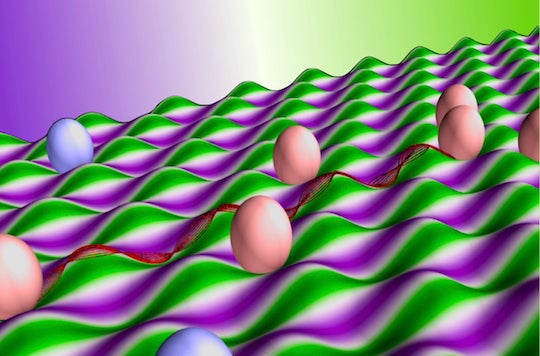Rice theorists show unique electronics made possible by wavy patterns that channel electrons

A theory by Rice researchers suggests growing graphene on a surface that undulates like an egg crate would stress it enough to create a minute electromagnetic field. The phenomenon could be useful for creating 2D electron optics or valleytronics devices. Illustration by Henry Yu
Lay some graphene down on a wavy surface, and you’ll get a guide to one possible future of two-dimensional electronics.
Rice University scientists put forth the idea that growing a tom-thick graphene on a gently textured surface creates peaks and valleys in the sheets that turn them into “pseudo-electromagnetic” devices.
The channels create their own minute but detectable magnetic fields. According to a study by materials theorist Boris Yakobson, alumnus Henry Yu and research scientist Alex Kutana at Rice’s George R. Brown School of Engineering, these could facilitate nanoscale optical devices like converging lenses or collimators.
Their study appears in the American Chemical Society’s Nano Letters.
– See more at Rice News


